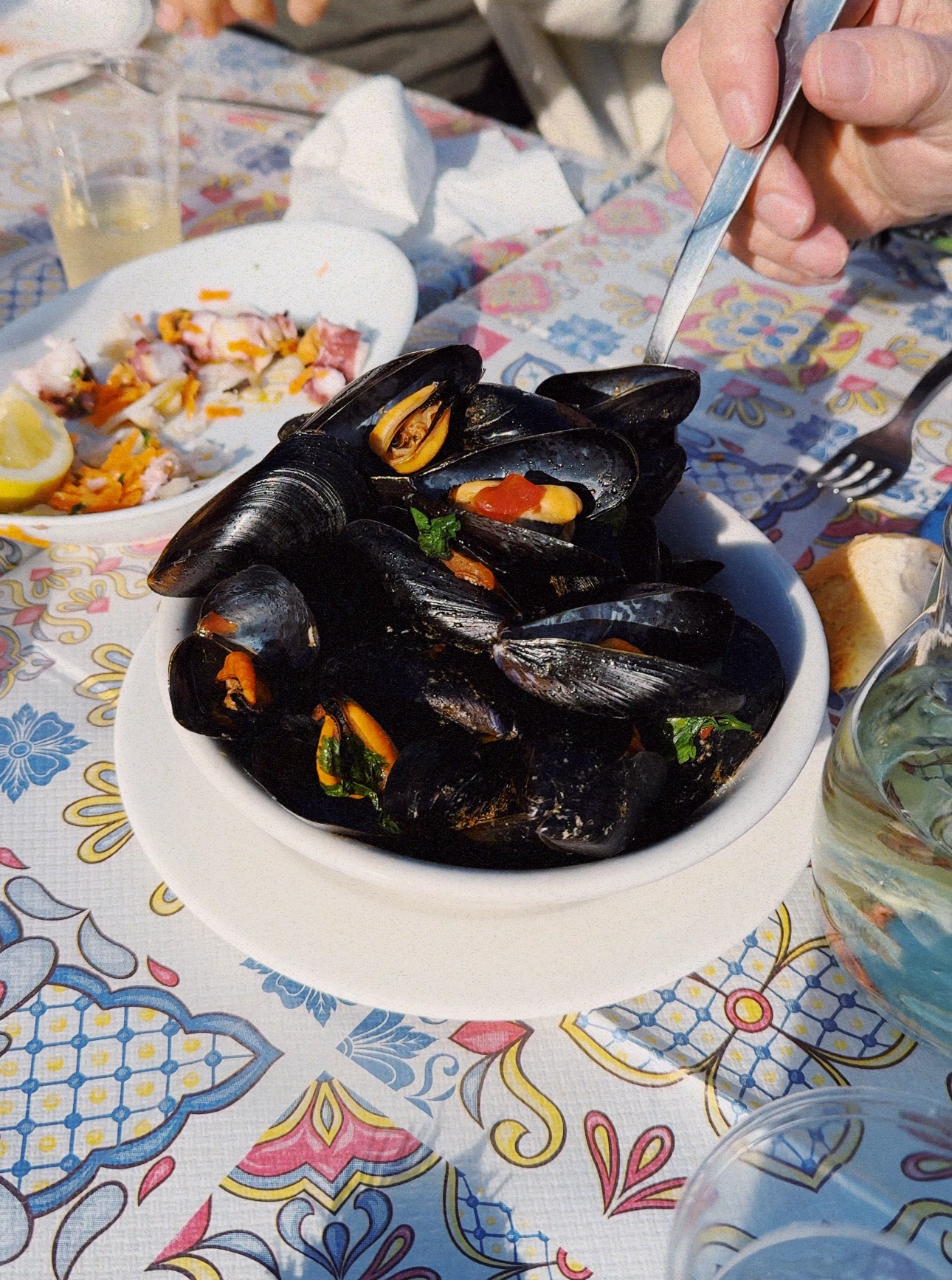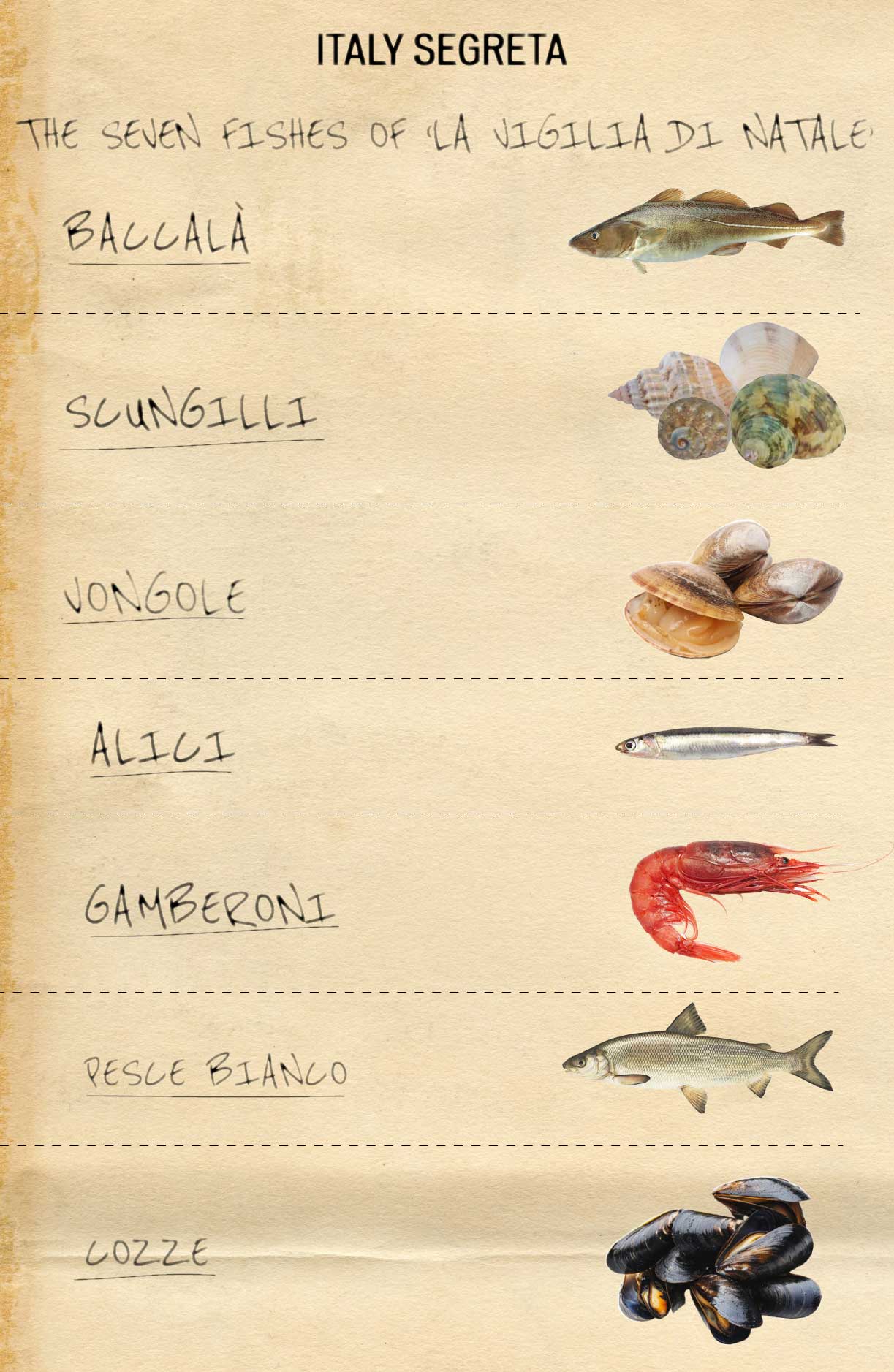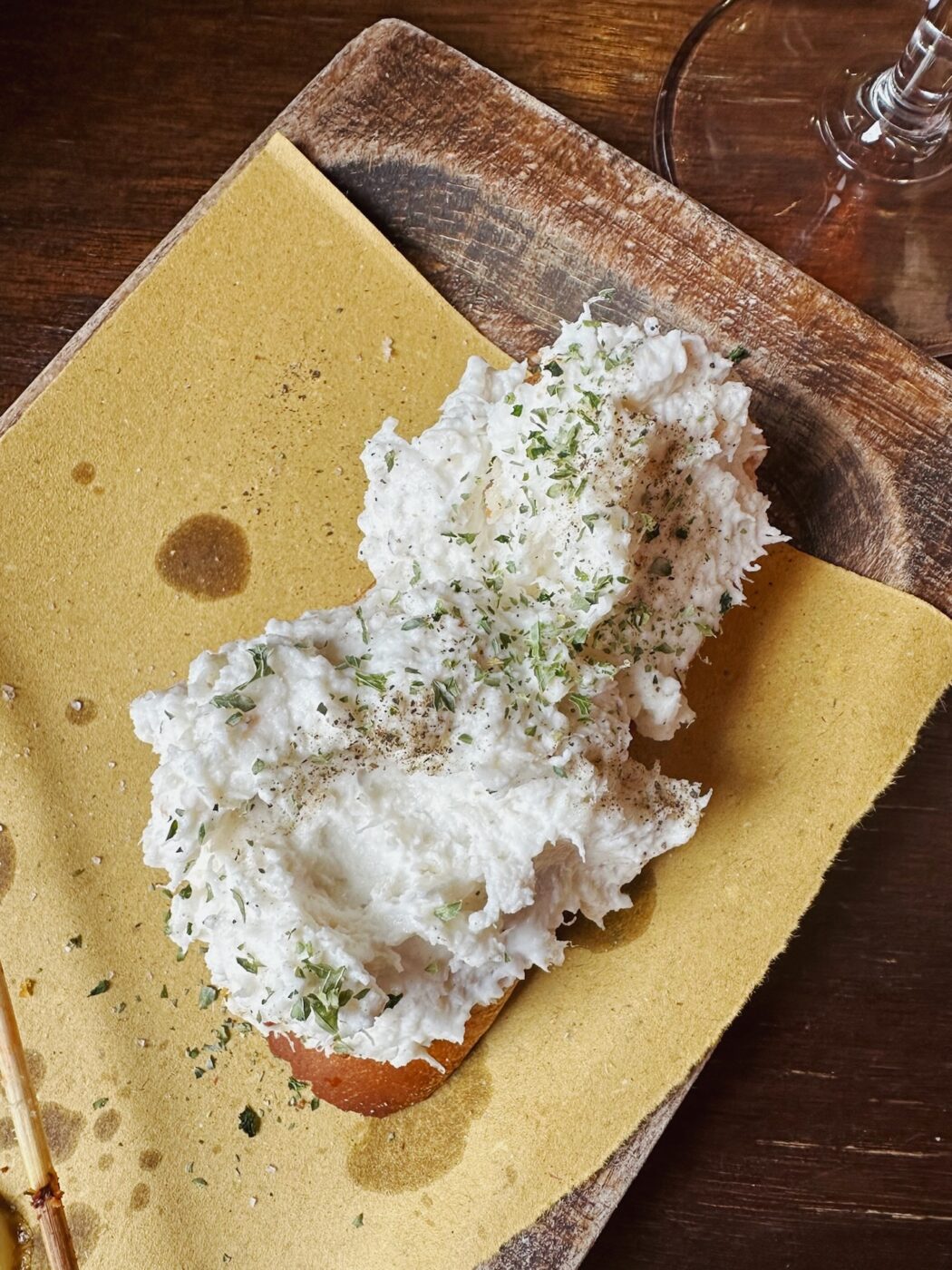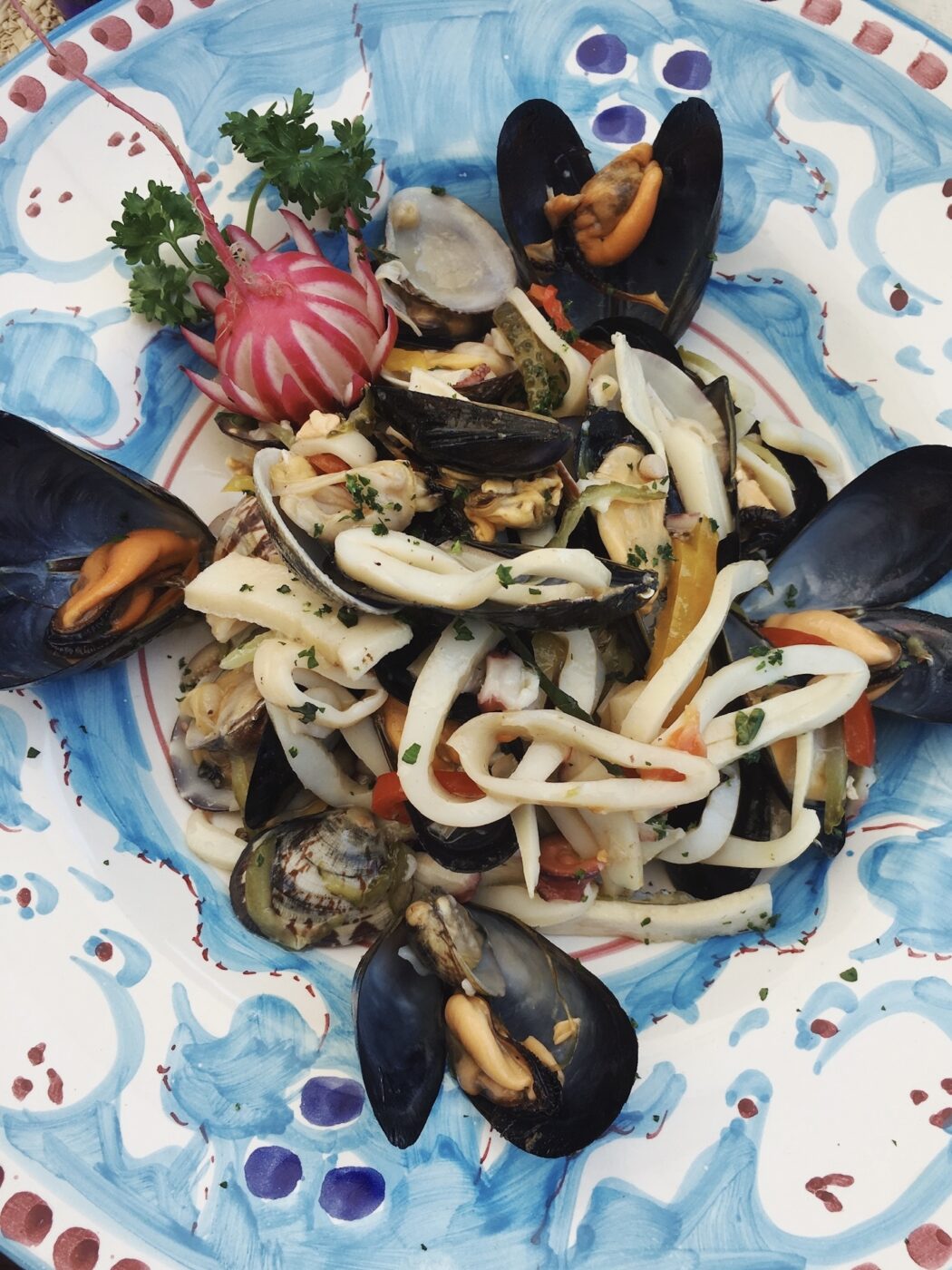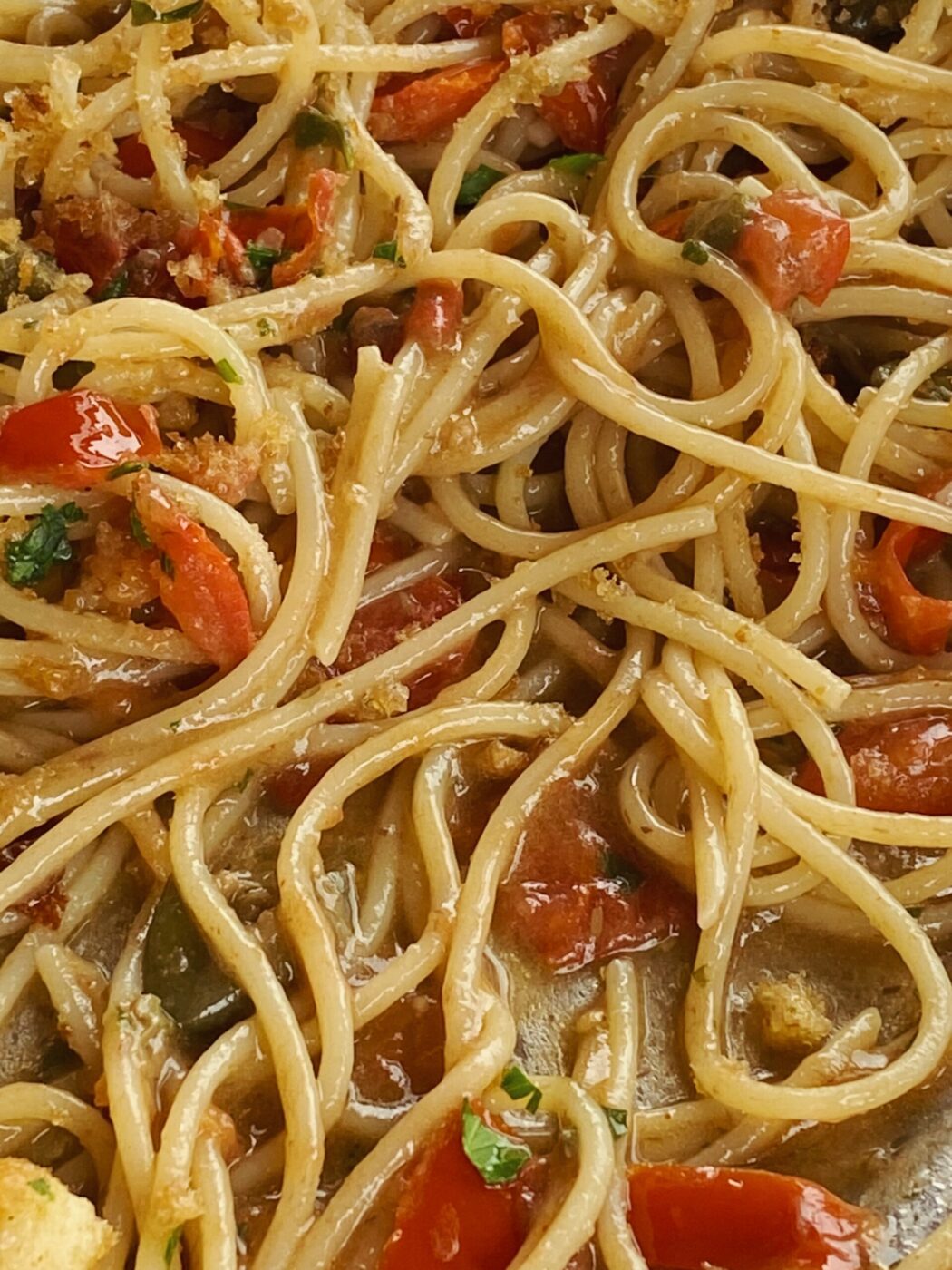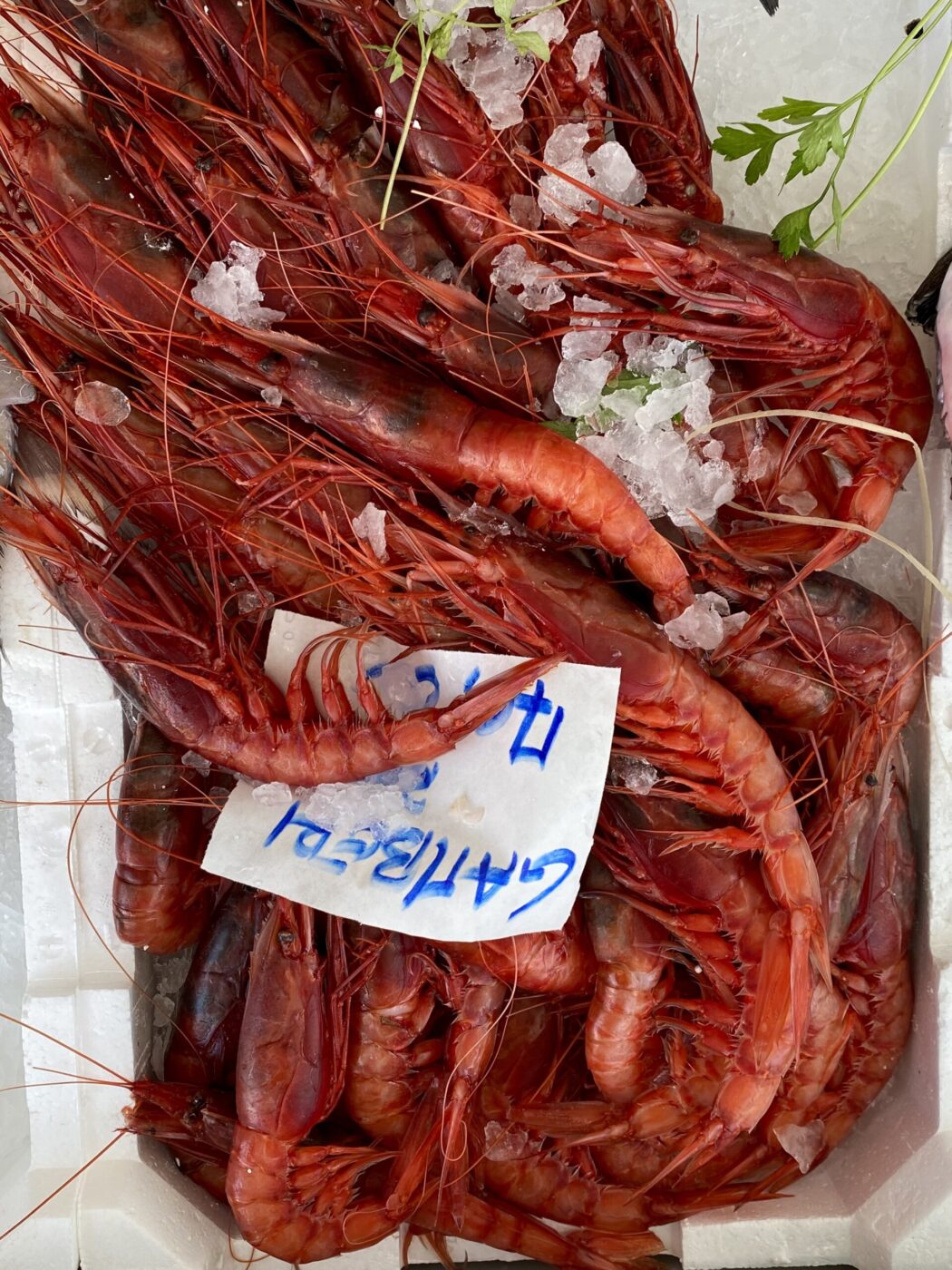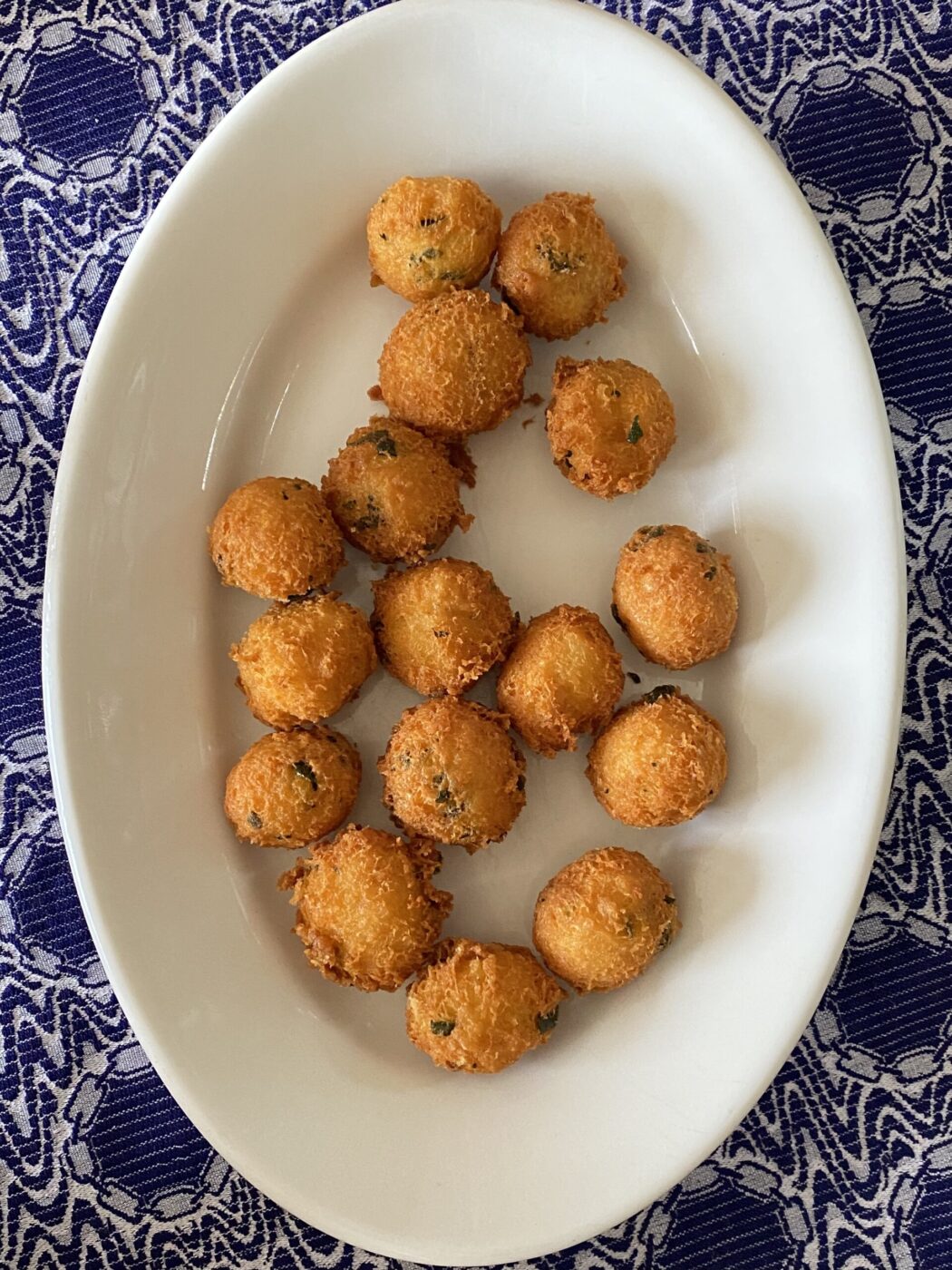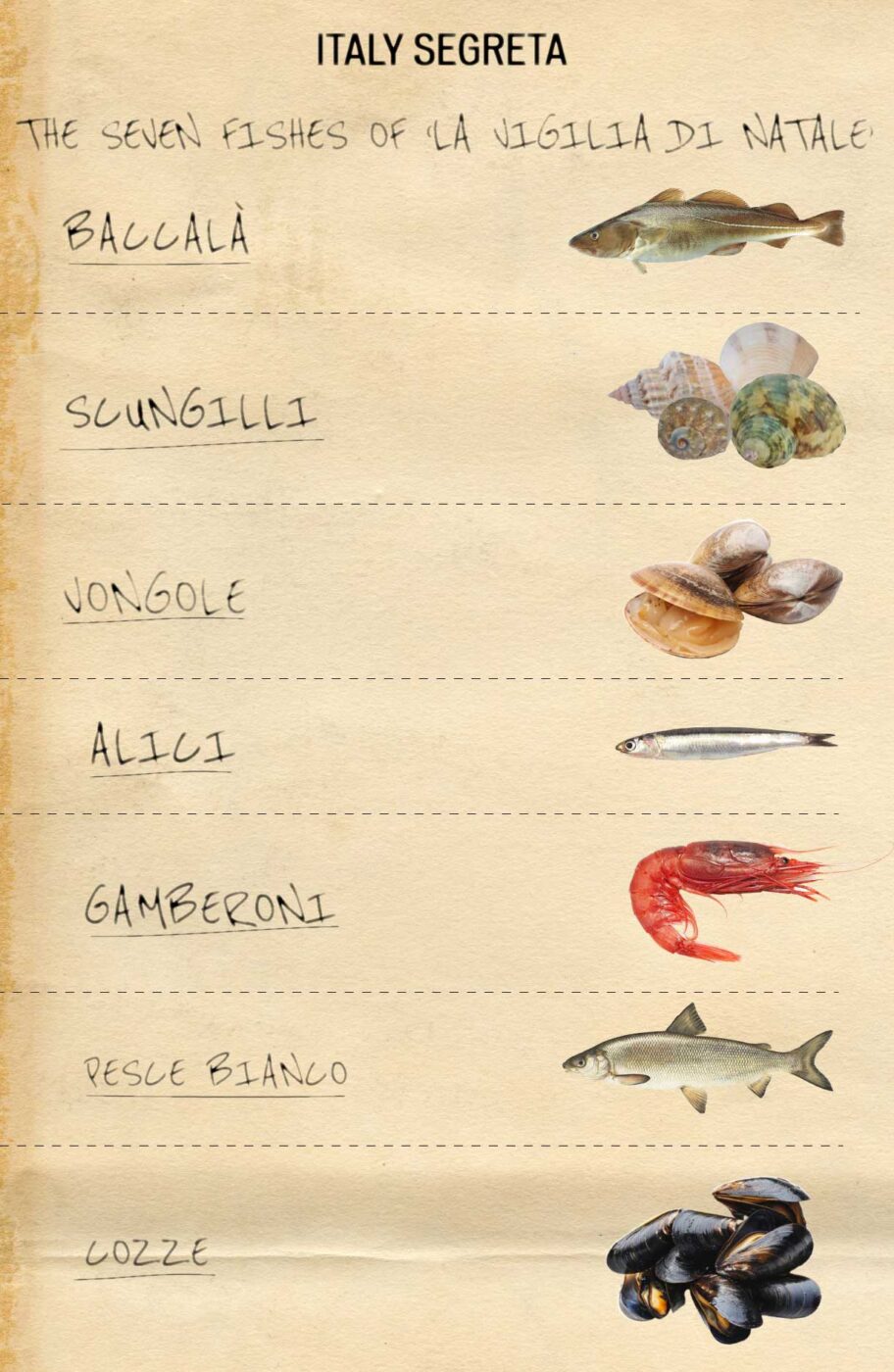In Italian homes both here and abroad, Christmas Eve means one thing: fish. Seven of them, to be exact, in a universally adored celebration known as “La Vigilia”, the Feast of the Seven Fishes. But for such a popular occasion, the dinner might have the most hotly contested history. Is it an Italian tradition or an American invention? A ritual rooted in Catholicism or a non-secular celebration? Why the focus on fish, especially in the dead of winter? And do there really have to be seven?
While no one story has been hailed as sacrosanct, it’s most widely believed that the Christmas Eve tradition of La Vigilia emerged in the early 20th-century, when southern Italian and Sicilian immigrants living in America soothed their homesickness during the holiday season by preparing a feast of typical Italian seafood dishes. Some say that the use of seafood represents the ocean between their old home and new one; others say it speaks to the Catholic tradition of abstaining from meat, known somewhat comically as “fasting”, in the days leading up to the birth of Christ. There’s even more theories on where the number seven comes from: frontrunners include that it’s an homage to the seven days it took God to create the world, a nod to the seven sacraments, a reminder of the seven deadly sins, and/or a reference to the Seven Hills of Rome.
When it comes to building the menu of this beloved belly-busting affair, the approach is as blissfully flexible as its origin story. Besides the mandatory inclusion of seafood in every dish, there are very few rules for La Vigilia, and you’ll certainly find a different menu in every Italian household. You can keep the courses classic like baccalà or insalata frutti di mare or opt for more Italo-American options like clams casino or shrimp cocktail. You can make it a formal, multi-course occasion, or, as is most common, keep it casual with a buffet-style bounty. And, though the official title states “seven”, even the number of dishes isn’t mandatory (three-Michelin-star Italian chef Massimo Bottura limits his household’s La Vigilia to no more than five).
More than anything, the mission of the meal, as with so many Italian traditions, is to reconnect with family and friends over fabulous food, and of course to celebrate the holiday season. While I’ve yet to try my hand at hosting this feast myself, should I someday muster the courage and master the skills, below is the menu I’d dream to deliver.
Baccalà Mantecato
Dried, whipped, salted cod. Does it sound sexy? No. Is it delicious? Absolutely. If there’s one dish you’ll almost always find on an Italian table on Christmas Eve, it’s a form of baccalà. The fish filets must be soaked in regularly-changed water for at least two days before they’re ready to eat, but after that, how you serve it is up to you. I opt to dress the fish with parsley and vinaigrette and serve it as a light salad, though you can also stew it with polenta for a heartier primo. But the most popular way to eat it is mantecato, “creamed”, which warrants a little more love and labor, requiring that the pre-soaked cod is virtuously hand-blended via wooden spoon or mortar and pestle (if you’re keeping things traditional) with garlic, olive oil, and herbs. The result–a fluffy, salty, creamy mousse served solo or spread thickly across buttery crostini or fried polenta–is totally worth it.

Baccalà Mantecato
Scungilli Salad
Perhaps the easiest plate of the pack to prepare, the scungili (conch) salad–born strictly from Italian American traditions–is likely the most greens you’ll get this close to December 25th in Italy (and, tbh, there aren’t even that many). Don’t be put off by canned conch, for it gets some brightness and lightness thanks to celery, fennel, olives, red onion, parsley, and bell pepper, all tossed in a classic, acidic vinaigrette that’s heavy on the red wine vinegar and garlic. Not crazy about conch? Try this insalata eoliana for a more classic seafood-centric salad from the Aeolian Islands, which is another loose interpretation of the word “salad”.

Spaghetti alle Vongole
Now, I understand that this is a dish more closely associated with summer than the night before Christmas, but spaghetti alle vongole is so inarguably perfect that it warrants a year-round seat at the table (some would argue it’s even better in winter, since that’s when the beloved bivalves are in season). A mini poll of my closest Italian friends–hailing from Rome, Naples, Varese, Modica, and more across the country–confirmed, stating it was one of the few pastas guaranteed to appear on the table for La Vigilia each year. Starring just a fistful of ingredients–spaghetti, clams, white wine, garlic, parsley and olive oil–it’s a briny, sharp, slightly sweet celebration of simple and stunning ingredients, the kind of recipe the Italians are masters of. Here’s how to make this seasonless showstopper the Neapolitan way.

Puttanesca
While it might seem counterintuitive that a dish meaning “whorish” is one often served to celebrate the birth of Jesus, the power of puttanesca breaches all Biblical boundaries. Rich with tomatoes, garlic, olives, and capers, with an umami hit of anchovies and a spicy peperoncino sendoff, this is a saucy plate of pasta in more ways than one. The bright, light spaghetti (the preferred shape over shorter pastas) hails, unsurprisingly, from that most daring of Italian cities, Naples. All hail the great minds who deemed this strumpet of a spaghetti suitable for this most holy of nights.
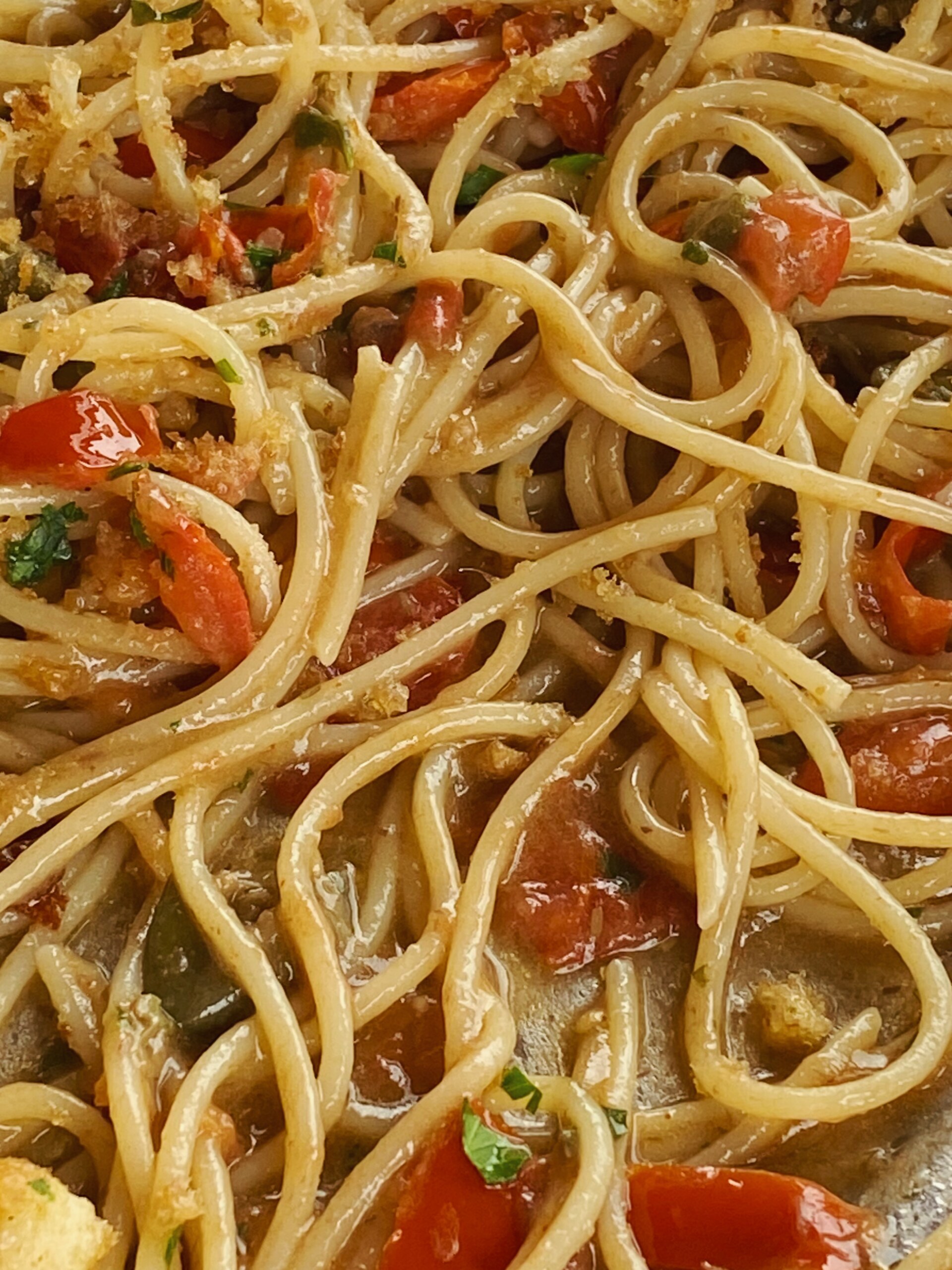
Gamberoni alla Griglia
Don’t mistake this feast for a full-on assault of seven massive mains. Dishes like this one are as blissfully light on the stomach as they are on the ingredients. Gamberoni, large prawns, are some of the most prized crustaceans throughout Italy–even acting as the symbol of Italy’s largest food mag, Gambero Rosso–and they’re particularly famous in Puglia. They need little more than olive oil, lemon juice, and a quick sear on the grill before being delivered to the table, ideally with an abundance of napkins.
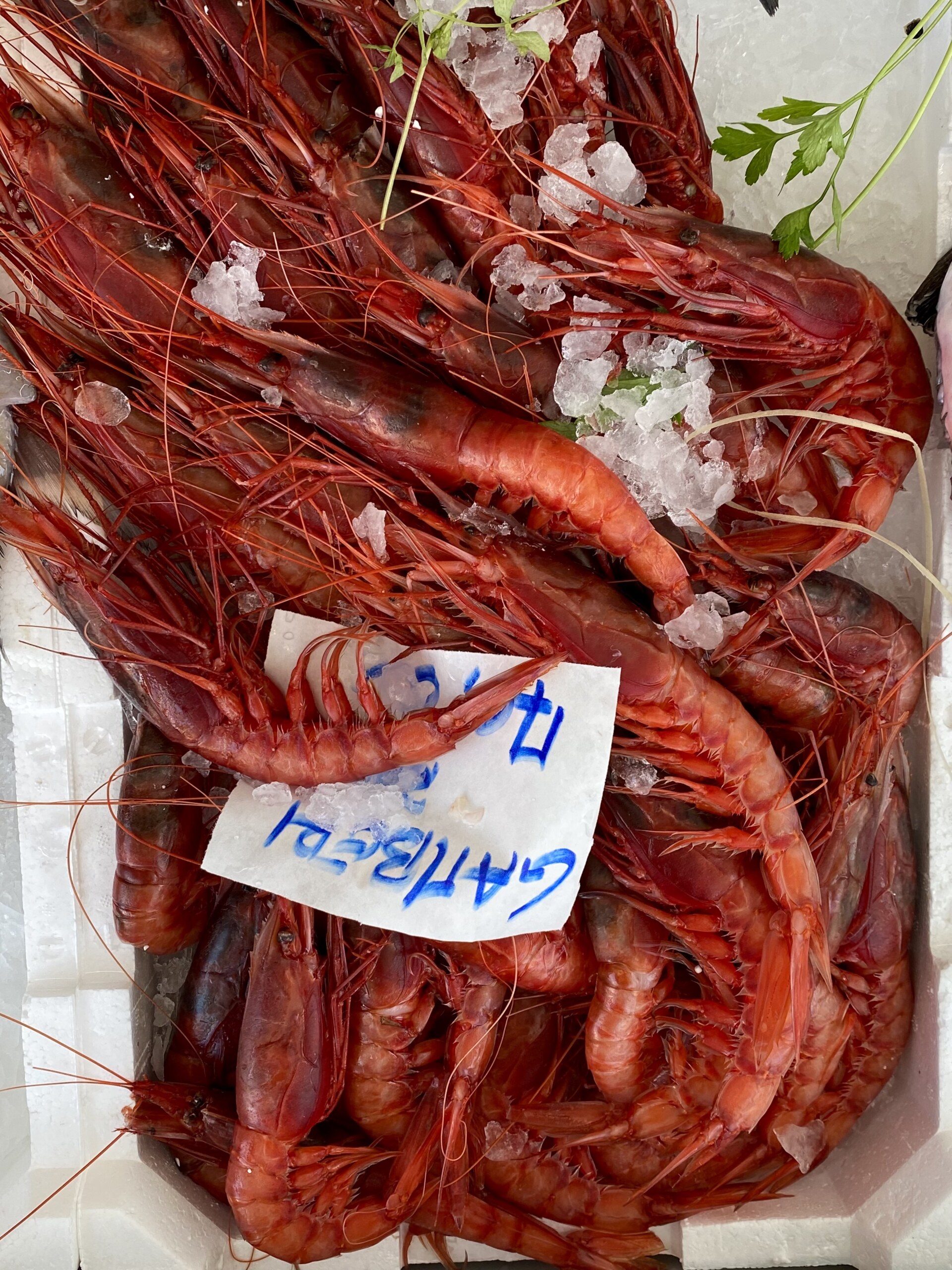
Polpette di Pesce Bianco
For some reason, “fishballs” have never quite taken off outside of Italy in the way “meatballs” have. Yet, the combo of typically white fish, egg, breadcrumbs, herbs, cheese, and the occasional starchy veg are Christmas celebration staples, and guaranteed crowd pleasers whether served as an antipasto or secondo. Not only are they versatile–you can serve them solo, fried, alongside braised greens, or drenched in tomato sauce–but they’re one of the more sustainable supper choices, traditionally used as a way to repurpose and maximize any end-of-week leftovers. It’s also one of the few occasions at which the cheese and fish pairing is permitted–so enjoy it.
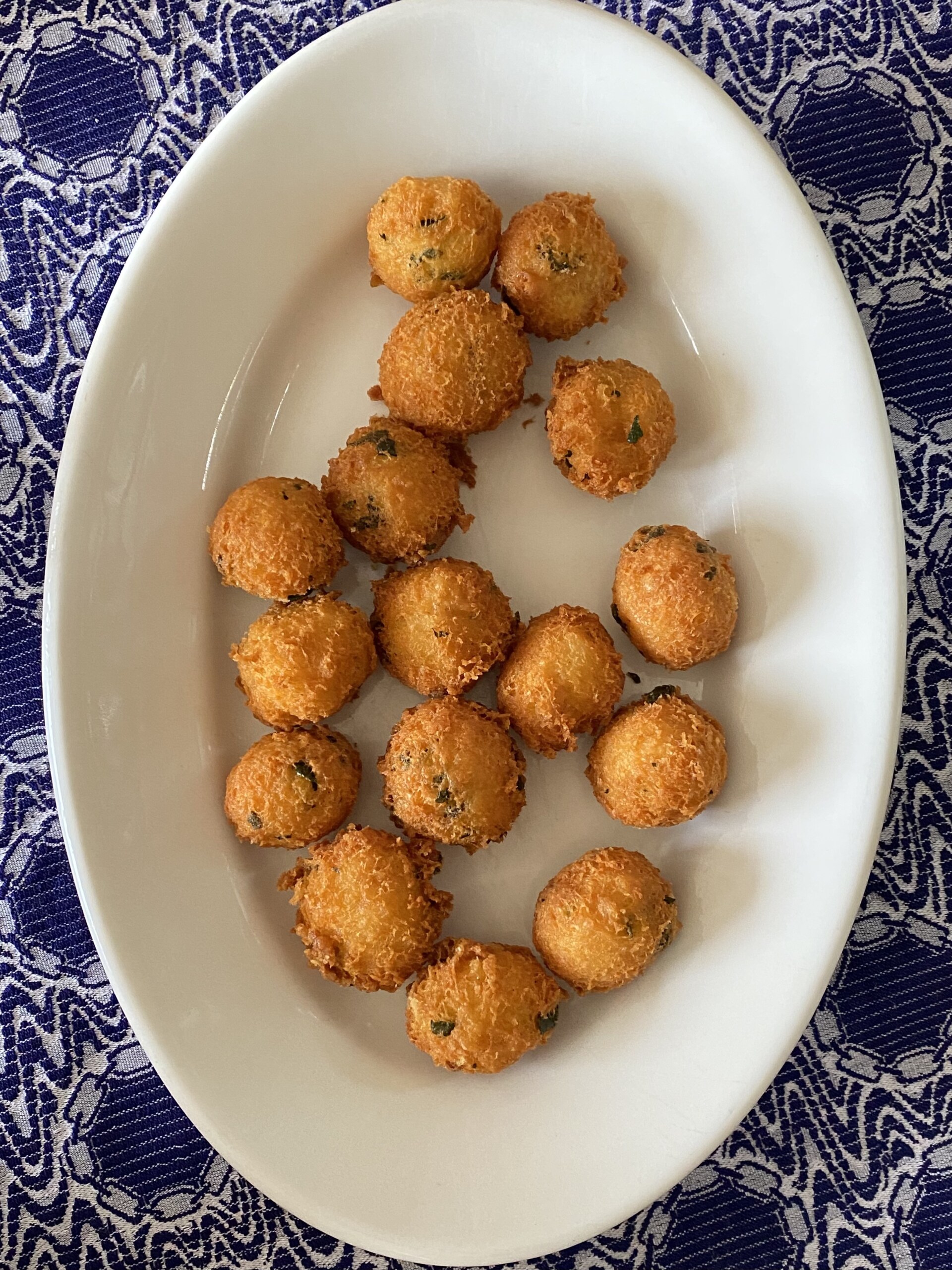
Cozze Impepata
Mussels. Olive Oil. Lemon juice. Pepper. With just four ingredients (five if you’re partial to parsley), cozze impepata is a simple celebration of seafood at its finest. No matter their preparation–be it steamed with pepper (impepata), drenched in tomato sauce, or swimming in a garlicky, white wine broth–mussels provide the perfect opportunity for messy, scarpetta-style eating, imbuing your holiday table with an instant “out-of-office” air. For those smart sorts exploring the Italian Riviera in the off-season, be sure to make time for a trip to Cavour Modo 21 in Genova for their unforgettable version of this Feast of the Seven Fishes favorite.
